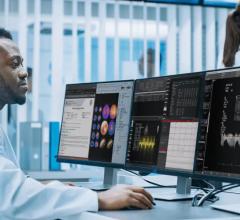
February 20, 2014 — Healthcare expenditure has been increasing throughout the last decade, and is beginning to become unmanageable. The American Heart Association has estimated that, in 2010, spending on cardiovascular disease (CVD) reached $273 billion dollars; a figure expected to rise with an increasing burden of disease. High healthcare expenditure is rooted in inefficient healthcare systems. Both physician’s and nurse’s time is taken up with administrative tasks and analysis of patient data through multiple appointments with patients over the course of their treatment, reducing the time they have available for valuable patient care.
As a result, there are numerous initiatives designed to reduce healthcare expenditure, including using healthcare IT to improve efficiency, and cost-effective medical devices such as remote cardiac event monitors.
Cardiac event monitoring is a form of remote monitoring used to identify arrhythmias and silent myocardial infarction. The device, fitted by a physician, allows patients to remotely transfer information for up to 30 days, either back to their physician or to a central center for patient monitoring. These devices are the answer to many hospitals’ problems of too few beds, not enough staff and an increasing number of CVD patients. Remote data transfer saves time for the patient and reduces the time physicians spend aggregating and analyzing data, increasing productivity and return-on-investment per patient.
The United States is currently the biggest user of remote monitoring, with spending in this market estimated at $699.6 million in 2012 (including compulsory services), according to IHS. Physicians here recognize the benefits of remote monitoring in its efficiency, ability to transfer patient data for central analysis and the lack of face-to-face follow ups required unless necessary.
Despite the merits of this technology, Holter ECG monitoring is still preferred in the United States due to the lack of costly 24 hour analysis required by reimbursement policies, as seen with event monitoring. This has limited growth potential in the U.S. market. In Western Europe, the use of event monitoring is far less than in the United States, despite a similar drive to save costs and boost efficiency. Incomplete reimbursement, costly supporting infrastructure and security of patient data during transfer are obstacles that must be overcome for remote monitoring to become widely used.
The idea behind this type of monitoring in cardiology is not a new one. However it has not had the impact that was expected. Other areas of healthcare have been prioritized where the return-on-investment is seen more quickly; with remote monitoring, the return on investment may not be seen for years due to necessary investment in supporting infrastructure. With limited healthcare budgets and a number of market inhibitors, there is little focus on implementing remote cardiac monitoring as standard outside the United States.
However, increasing CVD incidence is seen globally, and will require more diagnostic testing, with more patients filling hospital beds, further increasing the burden on hospitals. Despite the seemingly stalwart barriers to the widespread use of remote cardiac monitoring, demand is there and is growing. With easing healthcare budget restrictions, improving economies and the increasing burden of a disease that still plagues developed nations, the advantages of remote monitoring are becoming increasingly attractive.
For more information: www.ihs.com


 May 15, 2024
May 15, 2024 








